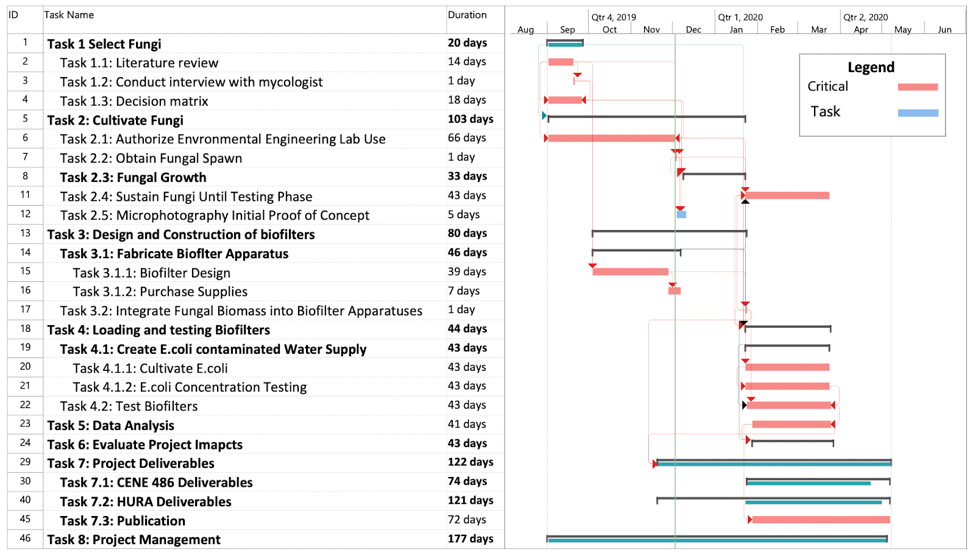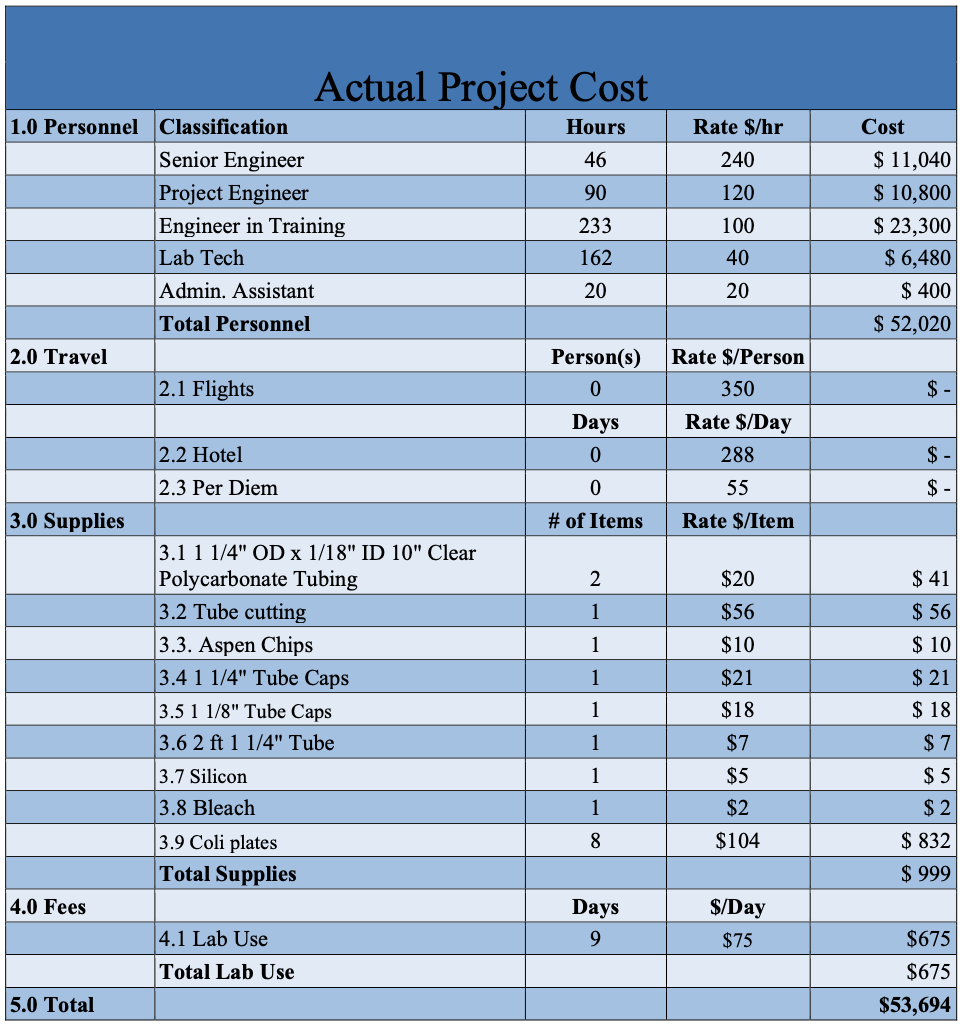Team
Fungi
Last edited 5/5/2020
Project Information
Abstract
Many of Arizona's surface waters are contaminated to unacceptable levels with Escherichia coli (E. coli) bacteria. The most prevalent E. coli cases nearby Northern Arizona are Oak Creek and the Verde River. Research shows that fungal species may be used to remediate many pollutants in water, including E. coli. Minimal research has applied fungi to remediate surface waters in arid climates. This project focuses on quantifying the capacity of common Arizona fungi to remediate E. coli - the first step toward implementing fungal-based biotechnology for restoration of contaminated surface water in arid climates. Research and testing of four fungal strains was performed to determine their individual capacities for removing E. coli from water. The tested fungi included: Pleurotus ostreatus, Stropharia rugosoannulata, Trichoderma asperellum, and Trametes versicolor. The biofilter design consisted of small-scaled identical vertical columns which were aseptically packed with Aspen wood chips, nutritive broth, and the respective fungal test strain per filter tube. After a five-week growth period, the filters were tested with water containing known amounts of E. coli. The flowrate for each fungal column was standardized, assuring each fungi was tested in like manner. A control column with no fungi accounted for any E. coli removal due to the media. An additional control contained dead fungi, accounting for any biosorption due to the fungal hyphae. The concentration of E. coli coming out of each column was quantified using EPA approved methods. Statistical analysis showed Pleurotus ostreatus was the highest performing fungi with a removal of 75 percent.
Project Constraints
The three primary project constraints are listed below:
▪ Time: Fungal growth time and overall project length of one academic year
▪ Native Fungi: Commercial availability of native pure cultures, and successful growth
▪ Resources: Manpower, budget, and availbility of equipment
Project Tasks
The project scope included eight major tasks, which are listed below:
▪ Task 1: Select Fungi
▪ Task 2: Cultivate Fungi
▪ Task 3: Design and Construction of Biofilters
▪ Task 4: Loading and Testing Biofiltersy
▪ Task 5: Data Analysis
▪ Task 6: Evaluate Project Impacts
▪ Task 7: Project Deliverables
▪ Task 8: Project Management
Project Schedule - Gantt Chart
A Gantt Chart schedule was created at the ouset of the project, as seen below. The chart was utilized throughout the project to stay on track with the schedule. The critical path of the project is also shown in the Gantt Chart.

Project Hours
The team spent a total of 550 hours on the project completing all major tasks, as seen in the table below. The project was originally estimated to require 851 hours from personnel. Thus, the project hours were overestimated.
Project Costs
The project was projected to cost about $80,000 for all aspects of the project, including personnel, travel, supplies, and fees, as seen in the table below.
The actual project is shown in the table below. The actual project cost was about $54,000, which is only about 65% of the original projected cost. This means that the project finished under budget. The reason for this was primarily reduced personnel hours logged, and travel plans were canceled [Due to COVID-19].
